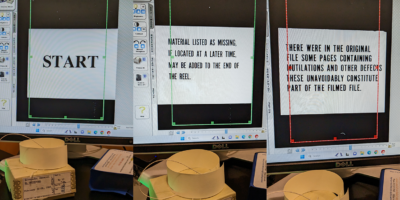By Hilarie Ashton
So many of the discourses about teaching, intentionally or not, work to privilege the mind over the body. In a lot of ways, that dynamic makes sense: students are in college to learn, after all, and learning happens in the brain, as conventional social and scientific wisdom have it. Also, bodies can be awkward and unruly, and we aren’t always sure where to put them or how to hold them or how to handle them when they break down. (At the beginning of every term, I tell my students, you and I are all likely to get sick at least once this semester; we should all stay home and heal so we don’t get each other sick.)
But bodies are also part of who we are—as teachers, students, and human beings—and they allow learning to happen in the first place. We talk a lot about muscle memory in the context of fitness, and, well, it’s relevant to learning too. And so the notion of embodied pedagogy, or, as I like to think of it, teaching with the body, is hugely important. This post jumps off from my research and practical interests in pedagogies that are both embodied and student-centered. I’ll offer reflections on the effects of teaching the body in the classroom when it too often gets limited or circumscribed, and how students and faculty can consider the interplay of their minds and bodies in ways that support active, inclusive learning.
One major way in which bodies are restricted in classrooms is through the demarcations of ability and disability that permeate university settings. Rather than designing our classroom materials to be accessible to as many students as possible, for example, most of us give out paper syllabi and handouts in 12-point font. I think a lot about the physical accessibility of spaces for different bodies—what’s near the door that might impede a wheelchair, how wide the aisles are, how close the bathrooms are—but it wasn’t until I had a visually-impaired student that I realized how inaccessible my teaching materials are. My graduate school colleague Andrew Lucchesi, now on the English faculty at Western Washington University, has a wonderful compendium of thoughts and resources on dis/ability that I learn from constantly. (Another colleague, Jenn Polish, has curated a whole series of posts on anti-ableist pedagogy right here on Visible Pedagogy.)
Even among so-called “able-bodied” populations, classrooms can limit students’ comfort. To some degree, they are designed that way: overstuffed chairs, for example, might lull more than one learner into accidental sleep, and so students sit in (usually) uncomfortable half-desks. To teach the body in a traditional classroom requires accepting some spatial limitations while thinking beyond others. If your room configuration allows, I recommend sitting in a circle rather than in rows, so that no student is subject to the Siberian Syndrome, which isolates some of them in the back row. (This configuration also tends to make students feel more comfortable speaking up, or so they tell me.). Space-permitting, I love to have students get up and switch seats periodically, so that they get proximity to different folks and can experience the classroom from a new vantage point.
Teachers often limit their own bodies—and, I’d argue, their teaching personae—by sticking to particular parts of the room, too. As I wrote in my last post, my persona in my first semester of teaching was not what I’d expected it to be. I found a lot of openness and excitement in the classroom where I expected authority and fear to be. The way I positioned myself, though, wasn’t aligned with that openness: I inserted myself behind a table by the chalkboard (at the front of the room) and stayed there. Looking back, it did feel like it gave me some authority. They all looked at me and listened; they had to. But I was also implicitly shielding myself, and asserting my right to be “in charge” in a way that was not ultimately productive or reflective of my teaching philosophy .
Three years later, it feels false to tether myself to a desk when I could instead join my students in a circle, or circulate among them. When space permits, I move around the room, peeking into group work. I sometimes jump up and down. I often lead a quick dance break (standing or in a chair) if discussion flags. I believe that this shared energy helps students meet me in a space of intellectual excitement. Crucially, teaching with the body in motion openly acknowledges being in the moment, too, considering the people and perspectives in the room, and shifting as needed. One of the best compliments I’ve ever received is that I wear my authority in the classroom lightly and thoughtfully, and I consider that in large part to be due to the flexible ways in which I use classroom space.
For those interested in bringing the body into their own classrooms in a more purposeful, emphatic way, I recommend not trying to change everything up at once. It’s okay to choose what feels authentic to you, what fits your persona. It might be enough to just remind yourself that there are other bodies in the room who exceed the category of “student,” and who have work lives and love lives and home lives, just like we faculty do. We are all embodied members of a community of the mind, and we all have many experiences. and to remember there’s something both very natural and very unnatural about the classroom for all of us. The trick is to navigate your body between those spaces, leaving room for your mind to engage.
Hilarie Ashton is a PhD candidate in English at the Graduate Center and a contributing writer for Visible Pedagogy.









Sarah Schmerler
This was so inspiring. I tell my students about different learning styles– even though they’re freshmen–in an attempt to give them some context for my rather “kinesthetic” approach to teach English Comp at NYCCT. In order to write, you need to experience language (I feel). Some great discussion starters have included vintage videos of Helen Keller, John Cage (performing a composition), and even Michael Jackson — the latter I use to emphasize punctuation and the use of pause for emphasis.